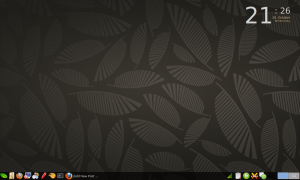Good news to all of you out there that watch the project I’m involved with called Unity Linux. What is Unity you ask? Allow me to give you some background:
Unity Linux is a small Linux core based on Mandriva Linux. We whittle down Mandriva to a small base desktop to provide users with ‘just enough graphics’ to be able to login and create their own distribution of Linux with the liveCD project which lies at the heart of Unity Linux. We’ve replaced some of the common things like uprmi with the Smart Package Manager and we’ve moved on past RPM version 4 to RPM version 5. Version 5 gives us some really cool features as well as speed enhancements across the board.
If you’re in the mood for Mandriva goodness (control center) without the extra stuff…give Unity Linux a try as a cholesterol free Mandriva.
In February of this year, Unity Linux turned 2 years old. With this milestone on the horizon, we were approaching the time when our hosting service was coming due for another large chunk of change. I began to seek out different hosting plans and price them and our developers started talking fund raising. In January, I approached a hosting company named Host Color about the possibility of sponsoring Unity Linux via providing a hosting plan for them…to my delight, they were more than happy to provide for us!
I approached Host Color because they have been a sponsor of Yet Another Linux Blog for well over a year now helping the authors here bring excellent how-to’s and editorials about Linux. Now Host Color has offered hosting for Unity Linux and given us a fine place to hang our hosting hat. So, please join me in thanking Host Color for providing us with our new home!
